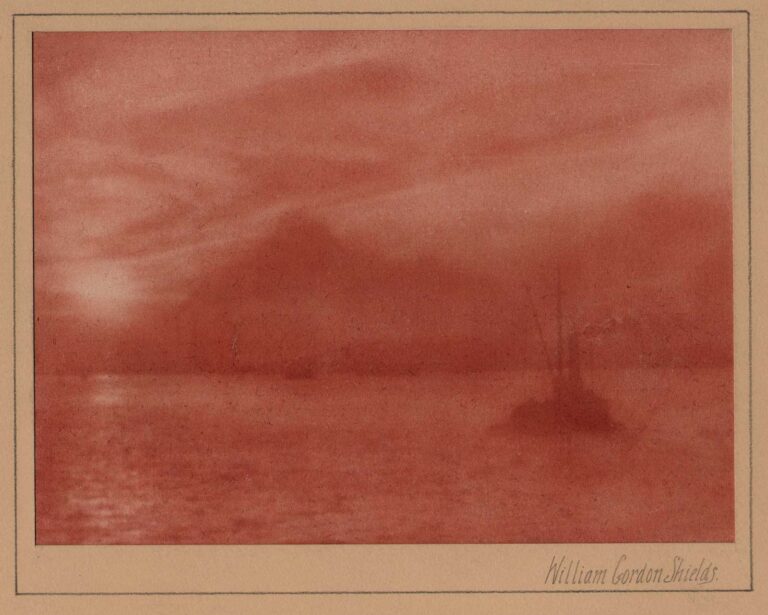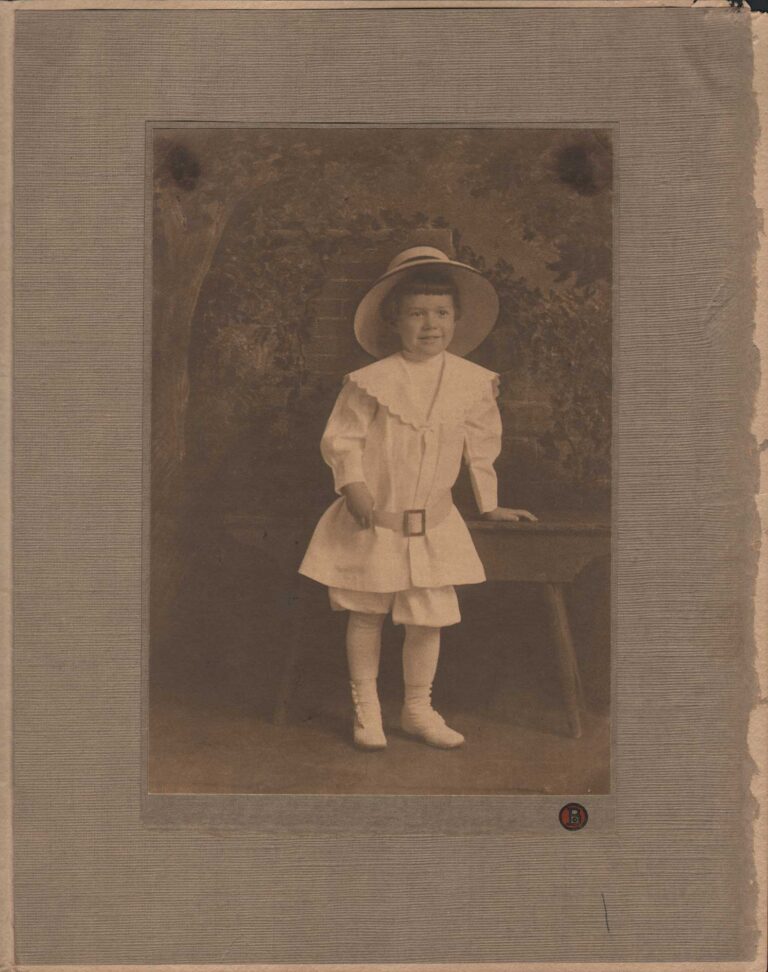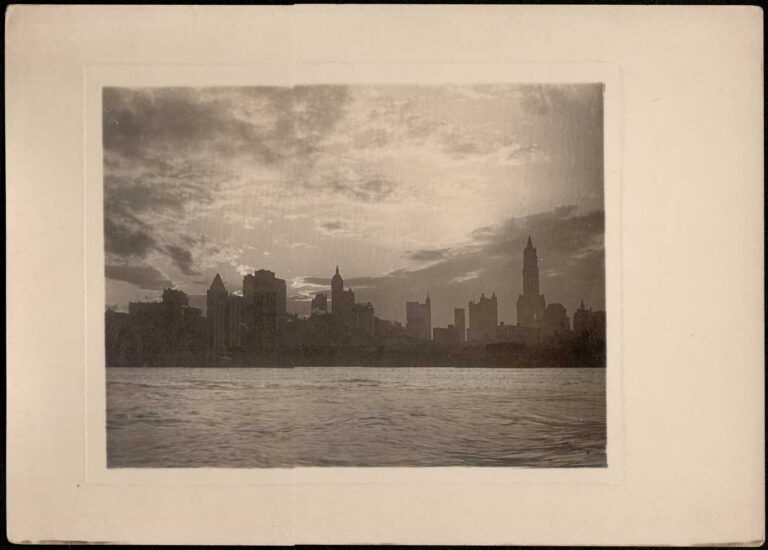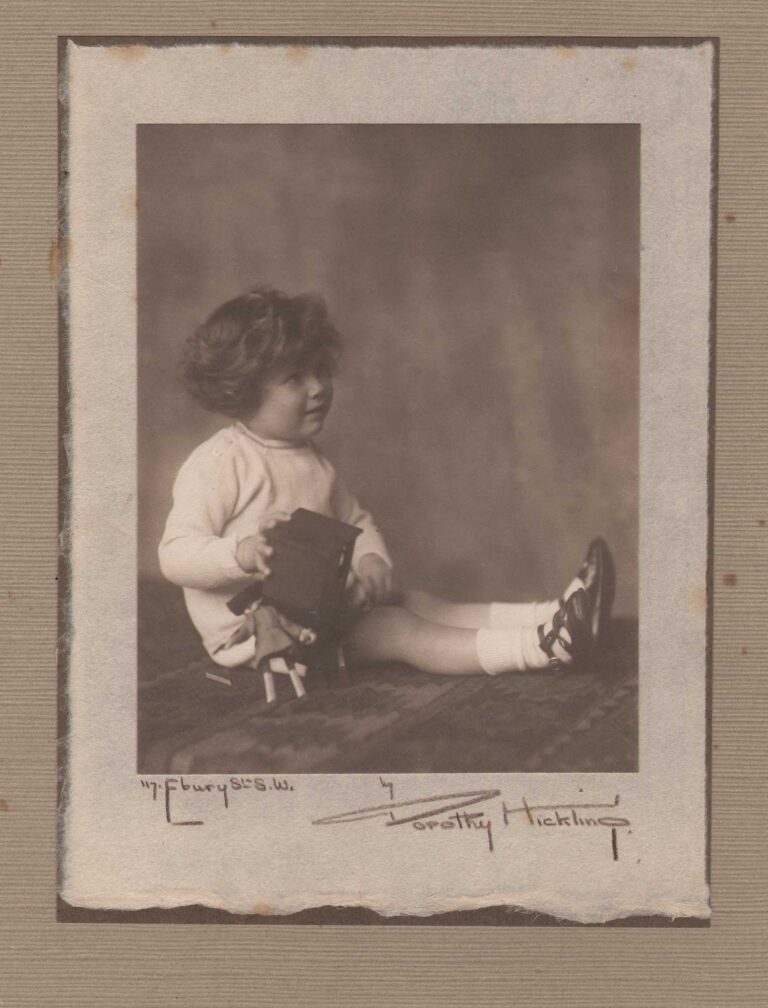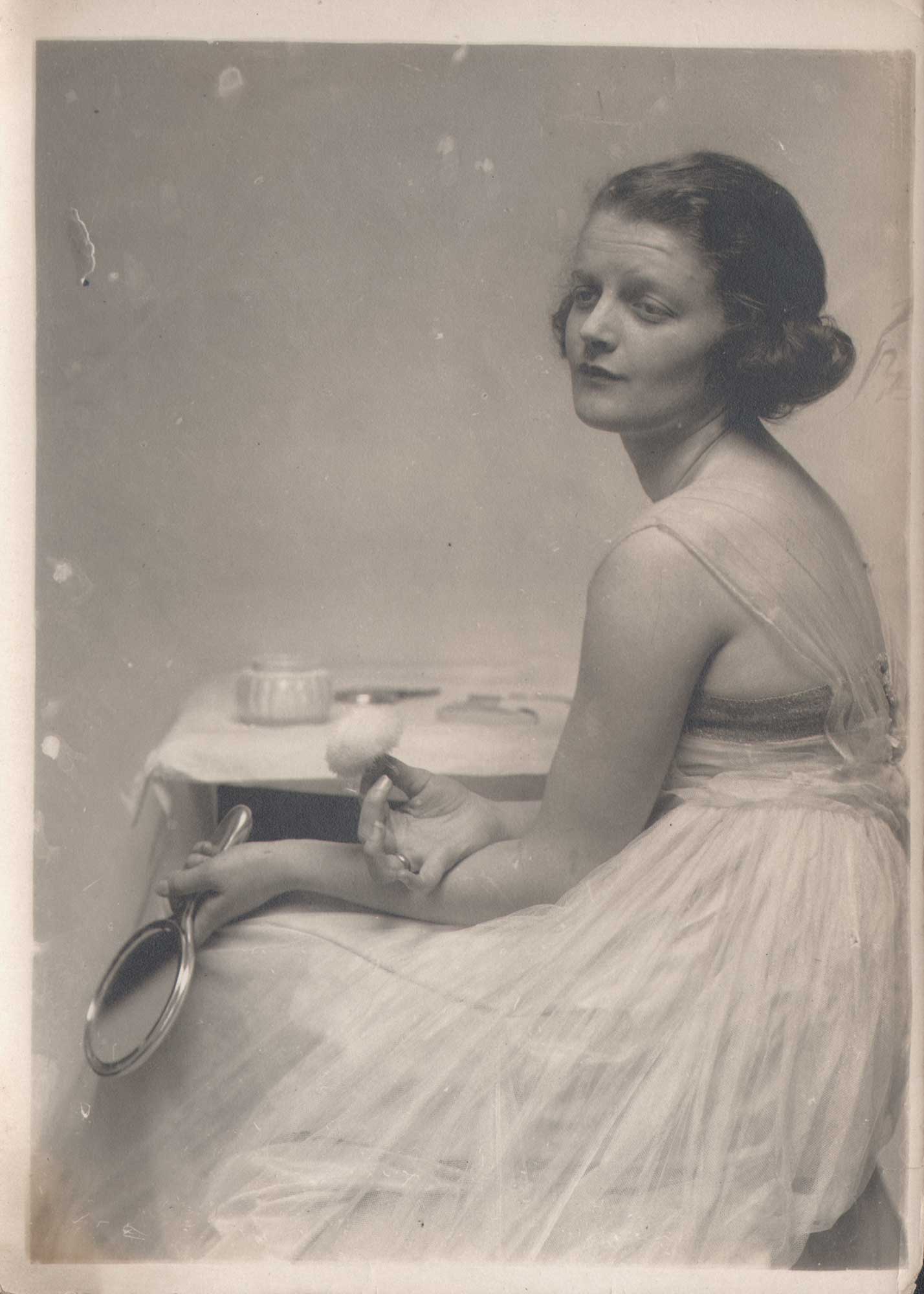
Fairfax Ivory Fiberloid Model
The work of Charles Sheldon is a decided exception to the general rule and his Fiberloid pictures have been splendid retail salesmen or, more correctly speaking, saleswomen. He has demonstrated that art can be successfully commercialized without detracting in any way from its aesthetic value. (1.)
An unknown model holds a personal mirror and cosmetics applicator. The image is believed to have been used as a source photograph for an illustration Charles Sheldon made for Fairfax Ivory Fiberloid, a brand name for artificial ivory made from a Celluloid variant.
The model has very distinctive heavy eyelids. Sheldon’s Model with Mask may feature the same woman, her right eye blocked by heavy shadow. The following advertising copy appeared in many large national magazines around 1919-20 along with the artist’s illustration featuring the Fairfax Ivory Fiberloid model seated at her vanity:
The beauty of Fairfax Toilet Articles -their rich ivory-like finish and dignified design-will be quickly appreciated. This new pattern, now shown by dealers of the better class, may be purchased one article at a time, or in complete sets: Brushes, Combs, Mirrors, Powder and Jewelry Boxes, Cosmetic Jars, Hair Receivers, Pin Cushions, Shoe Horns, Buttonhooks, Manicure Outfits.
Each piece made of solid Ivory Fiberloid-the most dainty, durable and sanitary of all materials for the boudoir, and will not tarnish, break or dent. Fully guaranteed. May be easily engraved and inlaid with artistic monograms in contrasting enamels. Please ask us to send you our complimentary and interesting booklet “Beautiful Fairfax,” by Grace Gardner
THE FIBERLOID CORPORATION Advertising Department, INDIAN ORCHARD, MASS. Sales Rooms: 55 Fifth Ave., New York Dominion Ivory Co., Ltd., Toronto, Can.
- Excerpt, “Illustrating Direction in Fiberloid Illustrations”, Advertising & Selling, Volume 29, June 5, 1920, p. 37
✻ ✻ ✻ ✻ ✻
Charles Gates Sheldon: 1882-1961
American illustrator and amateur photographer.
Born in Worcester, Massachusetts in 1882 (1.) and a 1901 graduate of Springfield (MA) High School, where his already accomplished illustrations were featured full-page in The Pnyx class yearbook, Charles Sheldon would go on to become an important American illustrator who embraced photography in aiding his artistic work.
Sheldon is perhaps best known today as the creator of the “Breck Girl”, being hired by Breck shampoo in 1936: …“to draw women for their advertisements. Sheldon’s early portraits for Breck were done in pastels, with a soft focus and halos of light and color surrounding them. He created romantic images of feminine beauty and purity.” (2.)
The following biography and background of the artist is courtesy of the now closed Grapefruit Moon Gallery in Minneapolis, MN, which acquired at an unknown date part of the Charles Sheldon estate, including examples of his original artwork and: “a large suitcase of 5″ by 7″ stills all taken by Charles Sheldon”:
Charles Sheldon was a prolific and gifted early 20th century illustrator who specialized in glamorous portraiture that graced the covers of early movie magazines and advertising in the art nouveau and art deco styles. After studying at the Art Students League, he went to Paris to study under the legendary Alphonse Mucha. Upon his return to America, Sheldon set up a studio at Carnegie Hall in New York City.
In 1918 Sheldon received his first pin-up commission, a series of ads for La Vogue lingerie. He soon began working on advertising campaigns for Fox Footery as well as creating covers for Collier’s Magazine, The Saturday Evening Post and Photoplay.
By 1921 he was contributing high fashion portraits to Woman’s Home Companion and Theater magazine. Famous women all over the world arranged to sit for portraits in his studio in Carnegie Hall in New York.
The pastels he created for Photoplay from 1925 to 1930 included glamorous depictions of Hollywood film stars like Clara Bow, Mae West, Jean Harlow, Greta Garbo, Gilda Gray, Mary Pickford, and numerous other Hollywood enchantresses. Unlike many movie magazine illustrators, who primarily worked off of publicity photos, many of these stars sat for Sheldon personally. Along with his work for Photoplay, the artist worked for Screenland, Movie Classic and Radio Digest magazines.
More on Sheldon’s photographic archive:
Sheldon maintained a studio at Carnegie Hall in New York City during the 1920s-30s, and photographed the glamorous Hollywood film stars of the era for his cover portrait work. Stars who sat for Sheldon include: Jean Harlow, Clara Bow, Marion Davies, Gloria Swanson, Pola Negri, Olive Borden, Mary Pickford, and literally dozens of others. What makes this collection so interesting is these stills were never meant for public consumption, they were taken to be used for his pastel portraiture work. Many are unscripted – Sheldon was an amateur photographer essentially and it is unique to see such glamorous stars posed often times so informally. Part of Sheldon’s talent was a knack for convincing his artist’s models and leading ladies to pose for him partially undressed or fully nude–emulating the spirit of NYC’s Ziegfeld Follies and other burlesque revues which had taken Manhattan by storm during the Roaring 20s.
- Charles Gates Sheldon: gravestone: Find a Grave memorial accessed January, 2025.
- Breck Shampoo: history: Wikipedia, accessed January, 2025
